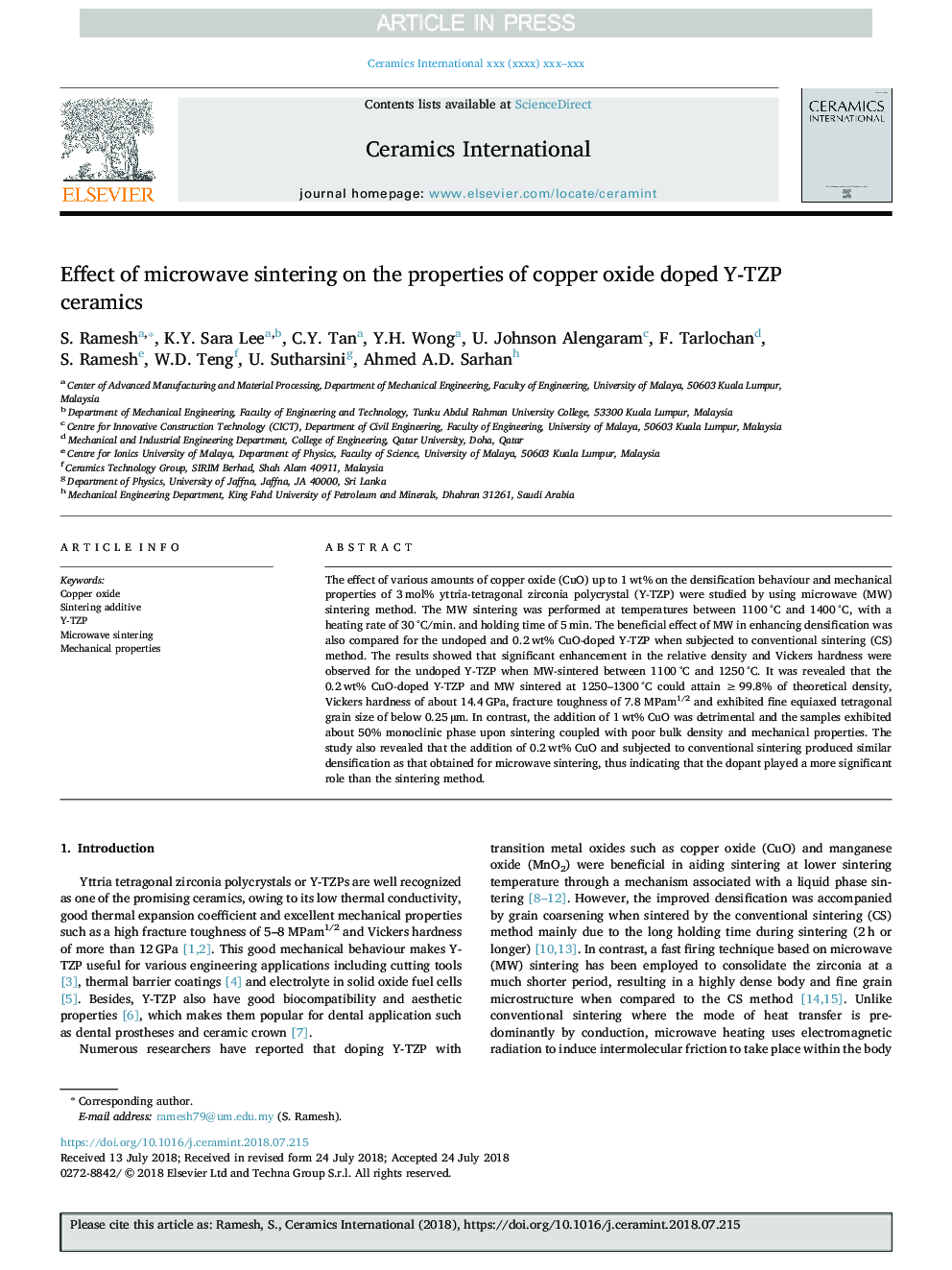| Article ID | Journal | Published Year | Pages | File Type |
|---|---|---|---|---|
| 10155435 | Ceramics International | 2018 | 7 Pages |
Abstract
The effect of various amounts of copper oxide (CuO) up to 1â¯wt% on the densification behaviour and mechanical properties of 3â¯mol% yttria-tetragonal zirconia polycrystal (Y-TZP) were studied by using microwave (MW) sintering method. The MW sintering was performed at temperatures between 1100â¯Â°C and 1400â¯Â°C, with a heating rate of 30â¯Â°C/min. and holding time of 5â¯min. The beneficial effect of MW in enhancing densification was also compared for the undoped and 0.2â¯wt% CuO-doped Y-TZP when subjected to conventional sintering (CS) method. The results showed that significant enhancement in the relative density and Vickers hardness were observed for the undoped Y-TZP when MW-sintered between 1100â¯Â°C and 1250â¯Â°C. It was revealed that the 0.2â¯wt% CuO-doped Y-TZP and MW sintered at 1250-1300â¯Â°C could attain â¥â¯99.8% of theoretical density, Vickers hardness of about 14.4â¯GPa, fracture toughness of 7.8 MPam1/2 and exhibited fine equiaxed tetragonal grain size of below 0.25â¯Âµm. In contrast, the addition of 1â¯wt% CuO was detrimental and the samples exhibited about 50% monoclinic phase upon sintering coupled with poor bulk density and mechanical properties. The study also revealed that the addition of 0.2â¯wt% CuO and subjected to conventional sintering produced similar densification as that obtained for microwave sintering, thus indicating that the dopant played a more significant role than the sintering method.
Related Topics
Physical Sciences and Engineering
Materials Science
Ceramics and Composites
Authors
S. Ramesh, K.Y. Sara Lee, C.Y. Tan, Y.H. Wong, U. Johnson Alengaram, F. Tarlochan, S. Ramesh, W.D. Teng, U. Sutharsini, Ahmed A.D. Sarhan,
